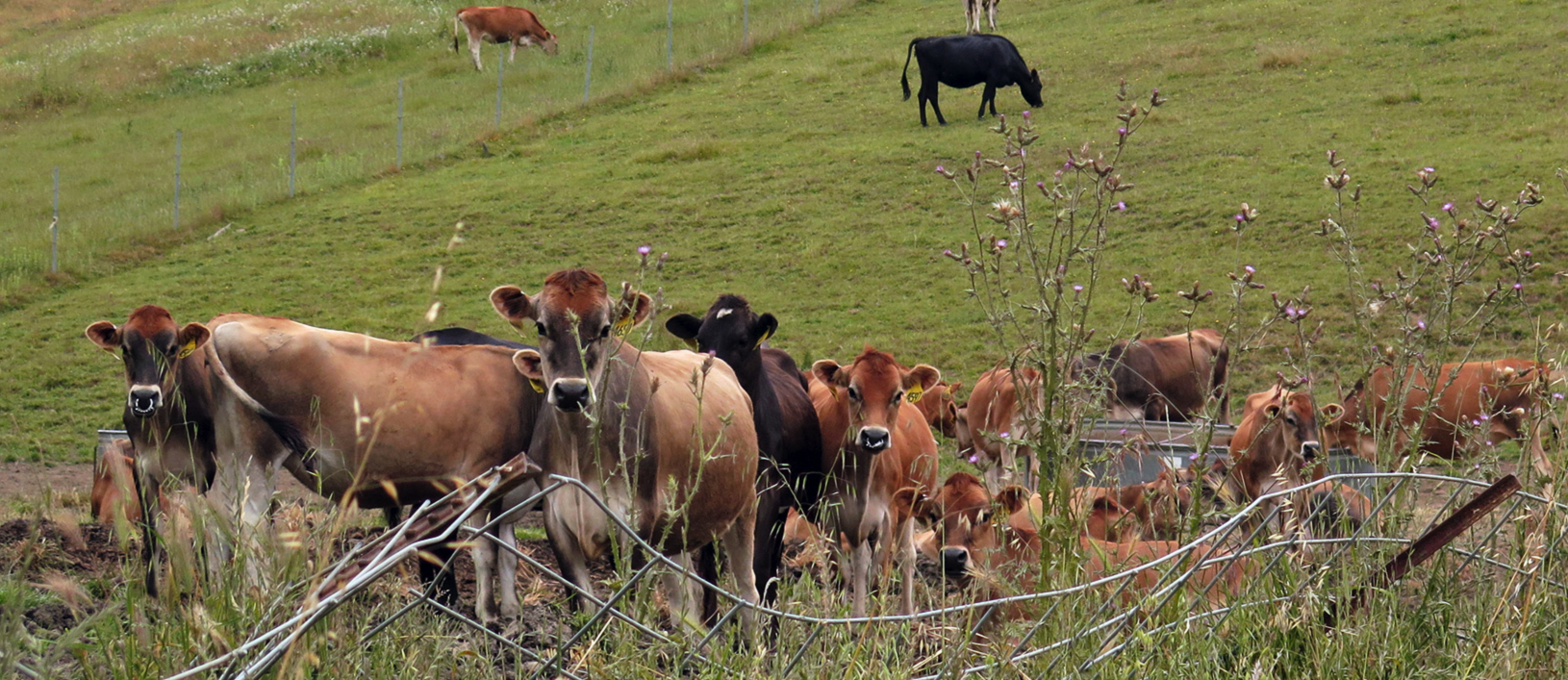Our New Cow Buddies

A few years ago, we noticed that every cappuccino we tasted at our Ferry Building farmers market location had some quality that felt a little bit magic, something we couldn’t quite identify. So we went home and messed with all the variables—the grind settings, the temperature of the brewing water, and extraction ratios—and eventually we figured out the secret: the milk.
It was different milk than what we used in our other cafes; it came from a farmer named Benoît de Korsak, who had a stand near ours for his business, St. Benoît Creamery. We knew this milk was good because you have a sip and, unlike the industrial milk you might pour on your Cheerios, you genuinely notice it. The creaminess, yeah, but also the complex flavors of butter and fresh grass. So a few weeks ago, we decided to use it in all our stores.
We’re super happy to be working with Benoît, a tall, gangly Frenchman who moved to the Bay Area fourteen years ago and couldn’t find any good yogurt. So he did what anyone would do: he drove around Sonoma County until he saw some Jersey cows. He talked to a few farmers, built some equipment, and pretty soon he was producing yogurt like he remembered from home. Bottling milk came a few years later. The license plate on his Ford F-150 says “YOGURT1” so you know he’s legit.

St. Benoît’s F-150

Benoît de Korsak
FARM LIFE
“That’ll kill ’em.” The farmer, who had the phrase “calf mom” tattooed on her body, was listing threats to her beloved Jersey cows. Illnesses, difficult births, poisonous plants; these cows were living in a dangerous world. It fell to her to protect them, provide nourishment, and maybe even love them.
We had come here to Sonoma County, out at the edge of the world where the gentle green hills drop into the Pacific, to visit the creamery and the farm where the milk is produced. The first thing we noticed is that everything is smaller than we thought it would be. The creamery is a tiny building. The bottles of milk get filled one at a time, and someone watches every single one. Even the cows are smaller, but more on that later.
Everything is little because it doesn’t need to be bigger. Benoîtdoesn’t need storage, because he calls over to the farm the night before and orders as much milk as he needs for the next day, and after it’s bottled it goes onto a truck to the city, and then pretty much straight into your coffee.
There are a few tanks, a machine for filling yogurt jars and one for milk bottles, and a couple other contraptions. Everything in the entire process is basically within shouting distance. If the person running the yogurt machine needs a hand, he can yell to the woman driving the milk truck, who can yell to the cows. No one here would yell at a cow, but still, you get the idea.
WHY IT’S WAAAAAAY BETTER
Beyond the deliciousness, this milk is special for other reasons too. It’s gently pasteurized to keep the good bacteria alive, and it’s easier to digest than typical industrial milk. It’s better for the environment because St. Benoît avoids plastic and they reuse their glass jars. They also carefully manage water use, and feed returned yogurt to livestock on the farm.
About those Jersey cows: They are the best cows.
First, they’re famous for their “genial disposition.” Second, as mentioned earlier, they’re smaller than other cows, which makes them super cute, but also well suited to the hilly terrain in Sonoma. Third—and this is key—they make really, really rich milk.
Milk from Jersey cows has about thirty percent more fat than other milk, so it’s sweeter and creamier. And in the spring, when the weather is cool and wet and stress levels are low, it’s even CREAMIER. So we’re talking some pretty damn creamy milk.

Jersey calves
HISTORY LESSON
As an historical aside, in 1789, the same year George Washington was elected president and the citizens of Paris stormed the Bastille, the residents of Jersey, a tiny island in the English Channel, were busy debating another serious political issue: banning the import of cows. The result meant that for 214 more years it would be illegal to bring any new cows onto the island, which kept the breed as sweet and kind as you would ever want a cow to be, and their milk just as delicious.
KINDER, GENTLER MILK
To be serious for a minute, even though these cows are cute enough to cuddle, and the milk tastes like morning dew, the milk from St. Benoît is so wonderful because people work really hard to make it that way. They carefully manage an organic herd of cows, they pay very close attention to how the milk is handled, and they refuse to cut the corners that might improve profit, but would harm the milk and the people who drink it.
In short, they’re careful, driven, and—not to be discounted—they’re kind. All of that makes for a delicious bottle of milk, and a product that we’re proud to add to the coffee that we love. Come by and let us pour some in your cup, and we’ll show you the pictures of the cows we now all have on our phones.
